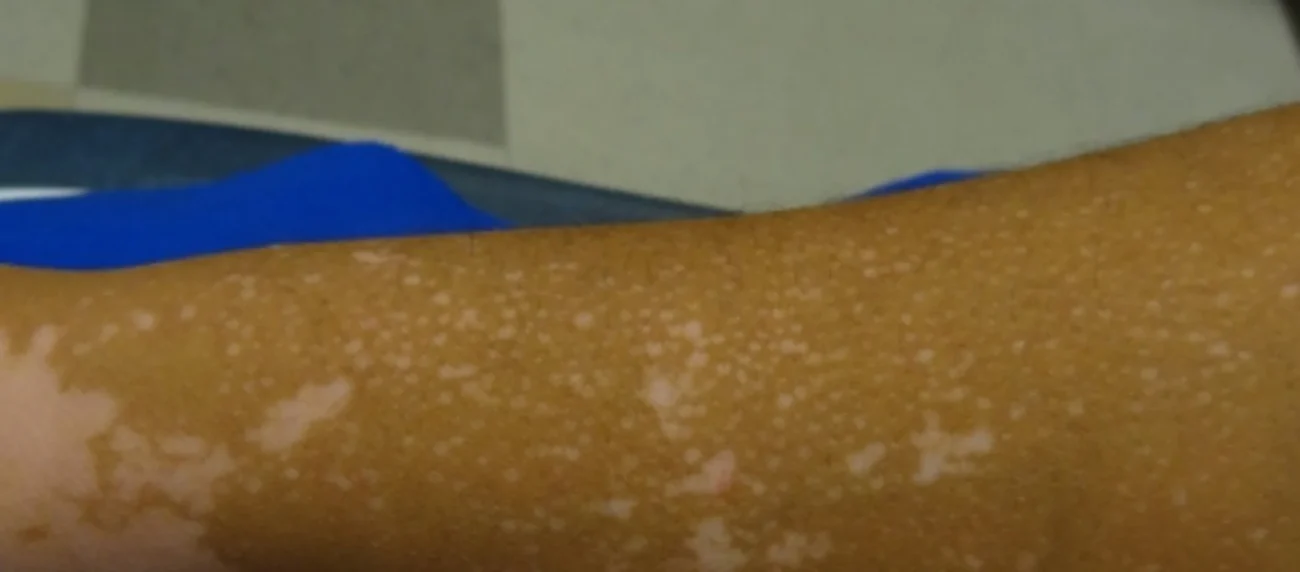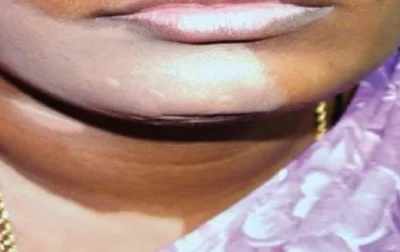Vitiligo is a chronic autoimmune disorder characterized by the progressive loss of melanocytes, resulting in distinctive white patches on the skin. Affecting approximately 0.5-2% of the global population according to the World Health Organization (WHO), vitiligo presents significant challenges both medically and psychosocially. While there is currently no cure for vitiligo, evidence-based pharmacological treatments can effectively halt disease progression and promote repigmentation when applied according to disease type and severity.
Understanding Disease Activity and Classification
Proper patient evaluation forms the cornerstone of effective vitiligo management. Clinical assessment must include comprehensive history-taking focusing on the age of onset, rate of progression, previous spontaneous repigmentation episodes, and potential triggers such as emotional stress or koebnerization. Healthcare providers should also evaluate current medications, occupational chemical exposures, personal and family history of autoimmune disorders, and the condition’s impact on quality of life.
Disease activity assessment is crucial for treatment selection. According to recent meta-analyses published in the Journal of the European Academy of Dermatology and Venereology, clinical signs of disease activity include confetti-like depigmentations, Koebner phenomenon, hypochromic areas or borders, and inflammatory borders around lesions. These signs are graded on a scale from 1 to 3, with Grade 3 indicating the highest disease activity.
Vitiligo stability is defined by specific temporal criteria. Stable vitiligo shows no new lesions and lacks progression of existing lesions over the past 12 months. Progressive vitiligo demonstrates new lesion development or enlargement of existing patches within the last 12 months. Rapidly progressive vitiligo involves abrupt deterioration with significant new lesion development or size increase over just 3 months.

Management of Rapidly Progressive Vitiligo
Rapidly progressive vitiligo requires immediate intervention to halt disease advancement. The primary pharmacological approach involves systemic glucocorticoids administered through various protocols:
Oral Mini Pulse Therapy (OMP) represents the most widely used intervention. Betamethasone (5-7.5mg) or dexamethasone (2.5-10mg) is administered for two consecutive days weekly over 3-6 months. This intermittent dosing strategy minimizes side effects associated with continuous steroid use while maintaining therapeutic efficacy.
Daily Oral Low-Dose Therapy involves oral prednisolone (0.3mg/kg/day) taken once daily for two months. High-Dose Pulsed Therapy utilizes intravenous methylprednisolone (8mg/kg/day) for three consecutive days. Intramuscular Triamcinolone (40mg) can be administered as a single injection, repeated every 4-6 weeks for a maximum of three injections.
Alternative systemic immunosuppressants including azathioprine, ciclosporine, methotrexate, and mycophenolate mofetil may be considered for patients with active vitiligo when systemic steroids are contraindicated or ineffective.
Treatment Strategies by Disease Extent
Non-Segmental Vitiligo Affecting Less Than 10% Body Surface Area
For localized disease, topical corticosteroids serve as first-line treatment for extra-facial vitiligo. Mid to high-potency topical steroids (Class III and IV) can be applied once daily to facial lesions, with mometasone furoate preferred due to its favorable side effect profile. Super-potent steroids are reserved for trunk and extremity lesions, while periocular areas should be avoided.
To minimize adverse effects, intermittent therapy schedules are recommended, including 5 days weekly, alternating weeks on and off, or 3 weeks on followed by 1 week off. Treatment should be discontinued if no repigmentation occurs after 3 months, as chronic use can induce tolerance and tachyphylaxis.
Topical Calcineurin Inhibitors are particularly valuable for facial vitiligo, especially in periocular regions, genitals, and flexures. Tacrolimus 0.03% is recommended for children, while 0.1% concentration is appropriate for adults over 16 years. The FDA has established these age-specific guidelines based on extensive safety data. A large retrospective cohort study of 25,694 patients receiving topical calcineurin inhibitors and phototherapy for six months or longer (2001-2019) demonstrated no increased skin cancer risk.
Topical Ruxolitinib 1.5% Cream represents a significant advancement, being the first FDA-approved drug specifically for vitiligo treatment (July 2022). This Janus Kinase inhibitor can serve as first or second-line therapy for non-segmental vitiligo affecting ≤10% body surface area in patients ≥12 years. Applied twice daily (maximum 60g weekly) for up to 52 weeks, ruxolitinib demonstrates repigmentation rates similar to topical corticosteroids and calcineurin inhibitors. Treatment should be discontinued if no response is observed within 6 months.
For disseminated disease, Narrowband UVB (NBUVB) Phototherapy becomes the treatment of choice. Recalcitrant cases may benefit from targeted phototherapy using excimer lasers or autologous grafting procedures.

Non-Segmental Vitiligo Affecting 10-40% Body Surface Area
This intermediate disease extent primarily requires NBUVB Phototherapy as first-line treatment. Home phototherapy devices offer convenient alternatives for appropriate patients. Oral PUVA Photochemotherapy may be considered when NBUVB is unavailable or ineffective, though it carries higher risks of cutaneous malignancy and photodamage.
Extensive Non-Segmental Vitiligo (>40% Body Surface Area)
Patients with extensive disease benefit from NBUVB Phototherapy as the primary intervention. For those with 75-80% body surface area involvement who fail to respond to repigmentation therapies, depigmentation using 20% monobenzyl ether of hydroquinone may be considered. This irreversible treatment causes permanent melanocyte destruction both locally and remotely from application sites.
Segmental Vitiligo Management
Segmental vitiligo follows different treatment algorithms due to its distinct pathophysiology. First-line therapies include topical corticosteroids, topical calcineurin inhibitors, and NBUVB phototherapy. Second-line treatment involves autologous grafting procedures, particularly autologous melanocyte transplantation, which shows superior efficacy in segmental compared to non-segmental vitiligo.
Maintenance Therapy: A Critical Component
Maintenance therapy represents a crucial yet often overlooked aspect of vitiligo management. Research published in the British Journal of Dermatology emphasizes that intermittent use of topical corticosteroids or calcineurin inhibitors (twice weekly) combined with phototherapy (biweekly sessions) effectively maintains repigmentation gains.
Patients experiencing relapse during maintenance or after treatment cessation should receive another cycle of active treatment tailored to their disease extent. This approach prevents the common phenomenon of repigmentation loss that occurs when treatments are abruptly discontinued.
Emerging Evidence and Future Directions
Recent studies in the Journal of the American Academy of Dermatology highlight the importance of combination therapies. Research demonstrates that combining topical treatments with phototherapy often yields superior results compared to monotherapy. The synergistic effects of topical ruxolitinib with NBUVB phototherapy are currently under investigation in multiple clinical trials.
The role of vitamin D analogues, prostaglandin E2 analogues, and newer JAK inhibitors continues to expand. Oral ruxolitinib has shown promising results in clinical trials for extensive vitiligo, though regulatory approval remains pending.
Quality of Life Considerations
WHO guidelines emphasize that vitiligo treatment extends beyond mere repigmentation. The psychosocial impact of vitiligo can be profound, particularly in cultures where skin appearance carries significant social implications. Effective pharmacological management must be coupled with patient education, psychological support, and realistic expectation setting.
Studies from the International Journal of Dermatology demonstrate that early, aggressive treatment of active vitiligo not only improves clinical outcomes but also significantly enhances patient quality of life and treatment satisfaction.
Conclusion
While vitiligo remains incurable, rational pharmacological management according to evidence-based guidelines offers substantial hope for patients. The key lies in accurate disease assessment, appropriate treatment selection based on vitiligo type and extent, and implementation of effective maintenance strategies. As stated in recent European guidelines, the combination of proper patient counseling, shared decision-making, and evidence-based treatment can bring hope to vitiligo patients’ lives.
The landscape of vitiligo treatment continues to evolve rapidly, with new therapeutic targets and delivery methods under investigation. Healthcare providers must stay current with emerging evidence while maintaining focus on individualized, patient-centered care that addresses both the medical and psychosocial aspects of this challenging condition.
Note: Treatment decisions should always be individualized based on patient factors, disease characteristics, and local guidelines. Regular monitoring and adjustment of therapy remain essential for optimal outcomes.


